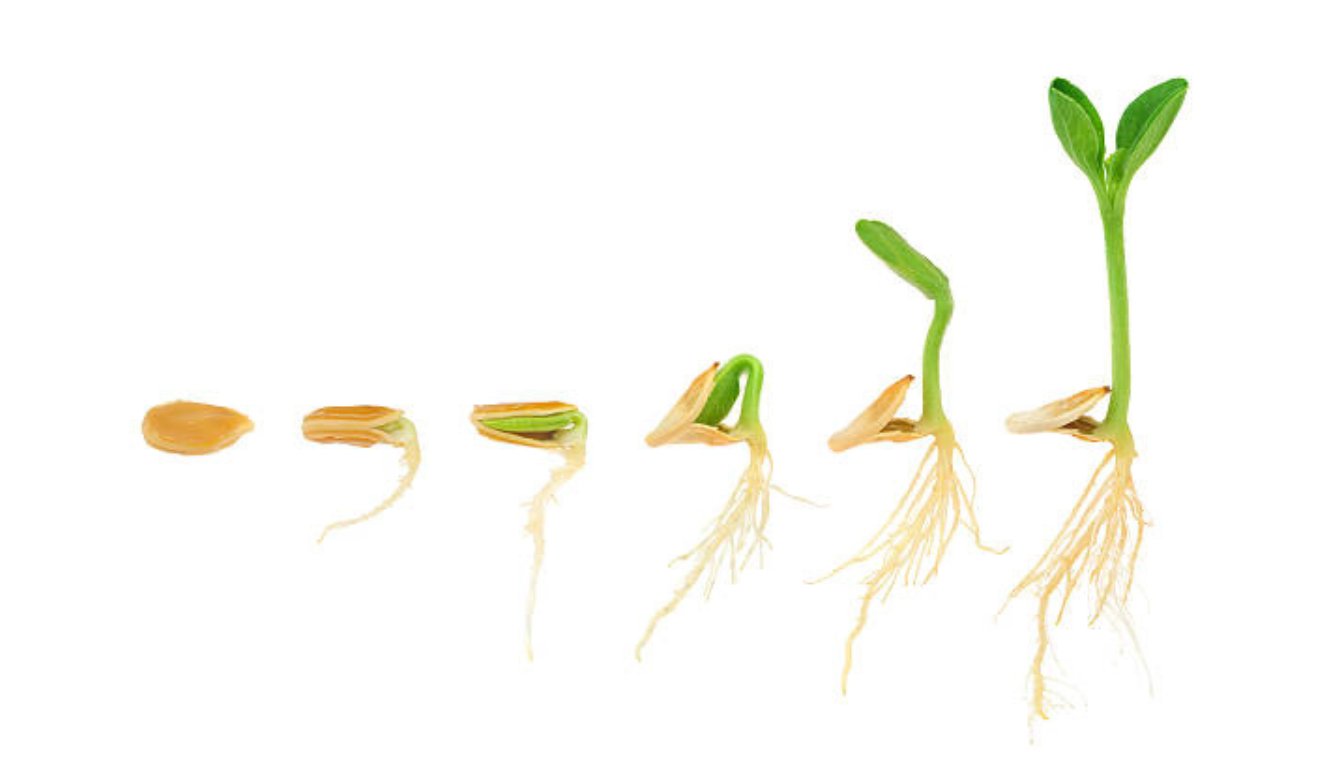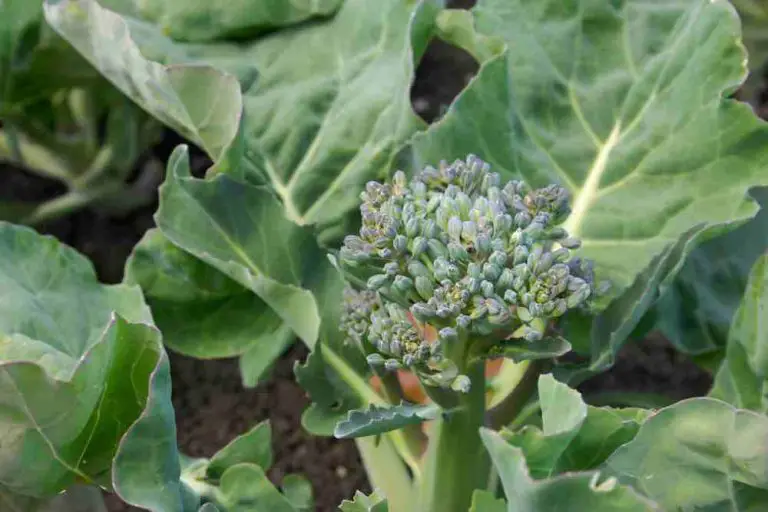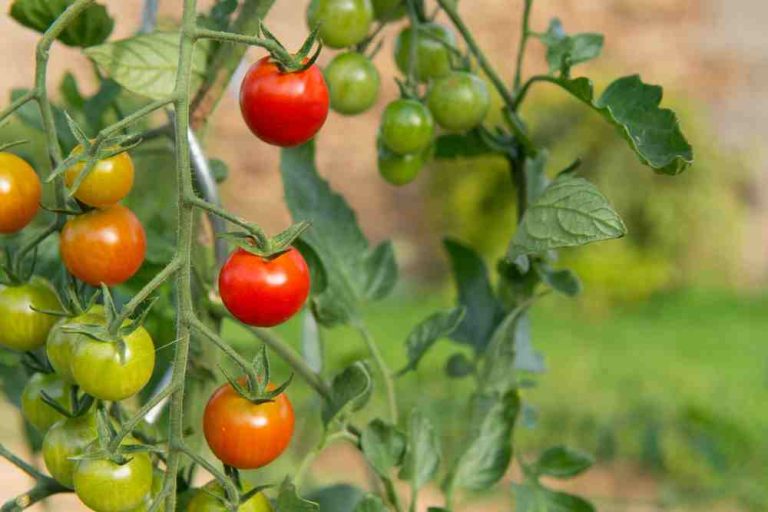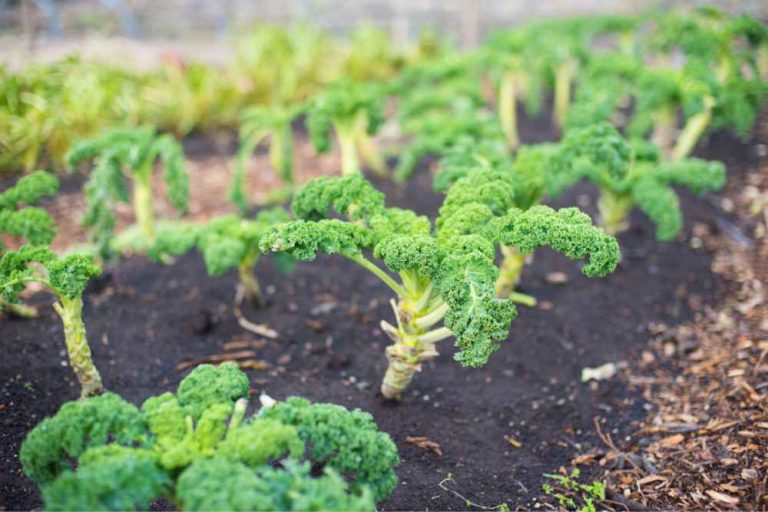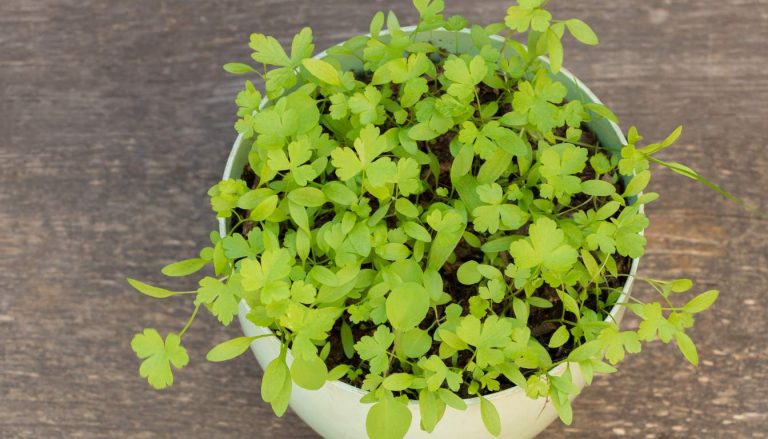Pumpkin Plant Root System: A Comprehensive Guide
Pumpkins are notoriously hungry, thirsty, and sprawling plants. To get water and nutrients, the roots need a well-developed root system. Pumpkin roots are like nature’s anchors, securing these iconic plants to the earth. But how deep do these roots grow? It’s a question many gardeners ponder. Learn fun facts about a pumpkin Plant root system, how deep its roots grow, and how you can plant it in a pot.
Basics of Pumpkin Plant Root Systems
The root system of a pumpkin consists of several key characteristics and functionalities.
- Taproot Development: Initially, pumpkin seeds sprout with a primary taproot that extends deep into the soil. This taproot anchors the plant and aids in nutrient absorption.
- Lateral Root Formation: As the plant matures, the taproot gives rise to lateral roots. These secondary roots spread horizontally, exploring the surrounding soil for water and nutrients.
- Fine Root Hairs: The roots of a pumpkin are covered with tiny root hairs that significantly increase the surface area for absorption. These fine hairs facilitate water uptake and essential minerals like nitrogen, phosphorus, and potassium.
- Feeder Roots: Most nutrient absorption occurs within the feeder roots, which are highly branched and spread throughout the soil. These roots have a pivotal role in gathering resources from the soil.
- Mycorrhizal Associations: Pumpkin roots often form symbiotic relationships with mycorrhizal fungi. These fungi enhance the root system’s efficiency by extending the reach for water and nutrients, aiding in nutrient uptake.
How Deep Do Pumpkin Roots Grow?

Pumpkin roots typically extend into the soil to depths ranging from 18 to 36 inches (45 to 90 centimeters), although they can delve deeper under favorable conditions. The initial taproot anchors the plant, penetrating deeply into the soil.
However, the majority of the root system, including lateral roots and feeder roots, spreads horizontally in the top 12 to 24 inches (30 to 60 centimeters) of soil.
This shallow to moderately deep root structure aids nutrient absorption, water uptake, and stability, enabling the pumpkin plant to explore the surrounding soil for essential resources while adapting to various soil conditions.
How Wide Do Pumpkin Roots Spread?
The lateral roots of pumpkins are even more astounding than their tap roots in terms of depth. That’s why they often don’t grow well in containers: their lateral roots reach at least as far as their vines, and sometimes much more.
And why do seed packets advise planting them so far apart? As a rule of thumb: Large fruited varieties must be planted 2 to 6 feet apart, in rows 5 to 12 feet apart. Bush varieties must be planted 1 to 3 feet apart, in rows 3 to 6 feet apart.
Factors Influencing Root Depth of Pumpkin
Various environmental, soil-related, and plant-specific factors influence the depth to which pumpkin roots grow. Understanding these elements can shed light on the range and adaptability of pumpkin root systems.
Soil Structure and Texture: Soil composition significantly impacts root depth. Loose, well-draining soil allows pumpkin roots to penetrate deeper than compacted or clayey soils. Compacted soils restrict root growth, limiting their depth.
Moisture Availability: The availability of water in the soil affects root development. Roots tend to grow deeper in search of moisture when the surface soil is dry. Adequate moisture throughout the root zone encourages roots to proliferate at shallower depths.
Nutrient Distribution: The distribution of nutrients in the soil affects root growth. Roots grow deeper if essential nutrients are concentrated at lower soil levels. However, an evenly distributed nutrient profile might encourage a more balanced root system across various depths.
Temperature and Climate: Warmer soil temperatures stimulate root growth, encouraging deeper penetration. Regions with warmer climates might foster deeper root systems in pumpkins compared to cooler areas, where roots might stay closer to the surface for warmth.
Pumpkin variety: The depth of pumpkin roots varies depending on the variety, with Sugar Pie pumpkins at 12 to 18 inches, Atlantic Giants delving as deep as 36 inches, and Jack O’Lanterns reaching depths of 18 to 20 inches. For a successful harvest, knowing the root depth of the various pumpkin kinds is crucial because this affects how well they absorb nutrients and water. Whether you’re cultivating pumpkins for competitive exhibits, baking, or carving, understanding the particular needs of each variety’s root structure will help you produce an abundant harvest.
Plant Age and Genetics: Young pumpkin plants develop taproots that grow deeper initially. As the plant matures, lateral roots spread horizontally, mainly in the topsoil. Different pumpkin varieties may have varying root structures due to genetic factors.
Spacing and Competition: Crowded planting conditions restrict root expansion as plants compete for space, nutrients, and water. Adequate spacing allows for healthier and deeper root growth.
Cultural Practices: Proper soil preparation, watering techniques, and fertilizer application can influence root depth. Tilling the soil, providing consistent moisture, and adding organic matter can encourage deeper root growth.
Are Pumpkins Capable Of Growing In Containers?
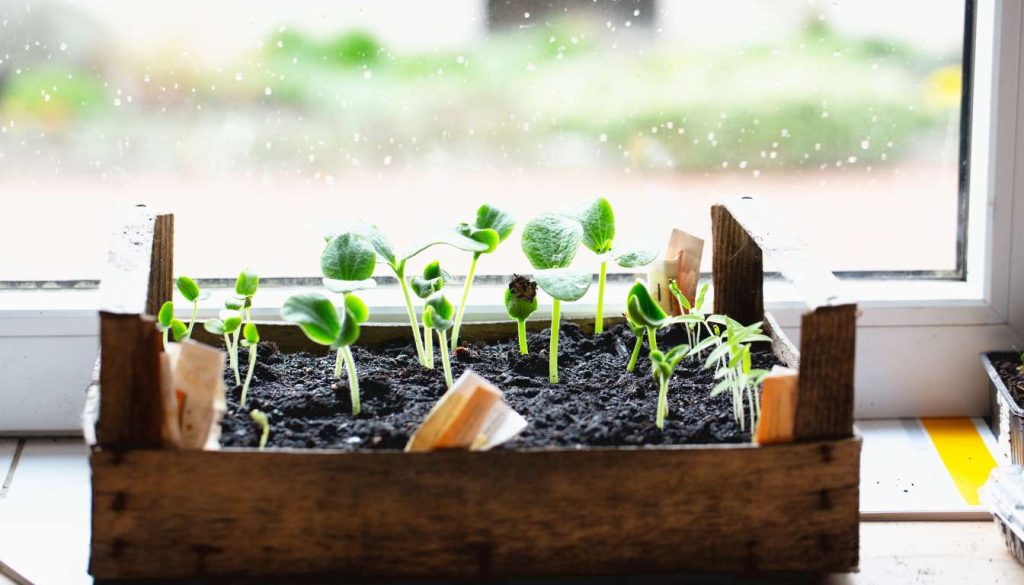
Pumpkins can indeed be grown in containers, although careful attention to certain factors is required for successful cultivation. It is crucial to select a large container with a minimum size of 15-20 gallons (57-75 liters) and ensure it has proper drainage. The container should accommodate the expansive root system of pumpkins, which usually spreads extensively.
Using a high-quality potting mix that provides good drainage and aeration is essential. Planting 2-3 pumpkin seeds about an inch deep and thinning to the strongest seedling helps ensure adequate space for growth.
Consistent watering, sufficient sunlight (6-8 hours per day), proper support for the vines as they grow, and regular feeding with balanced fertilizers are vital to encourage healthy growth in container-grown pumpkins. While it’s feasible to grow pumpkins in containers, selecting a suitable variety and providing optimal growing conditions are key to achieving successful growth and a good harvest.
Read – How to Grow Pumpkins in Containers
Five common pumpkin varieties and insights into their root growth behavior:
- Jack O’Lantern: This classic variety, known for its use in Halloween carving, typically develops a sprawling root system. Its roots tend to spread horizontally near the surface, seeking nutrients and moisture within the topsoil. Jack O’Lantern pumpkins have a moderately extensive root network that supports the vine’s growth and helps anchor the plant.
- Sugar Pie: Sugar Pie pumpkins, favored for their sweet flavor and ideal for baking, usually have a root system that spreads widely but not deeply. Their roots often extend horizontally, exploring the top layers of the soil for nutrients and water. These pumpkins typically establish a balanced root structure to support their relatively compact growth compared to larger varieties.
- Atlantic Giant: Renowned for their enormous size, Atlantic Giant pumpkins produce an extensive root system that can penetrate deeper into the soil. While they also develop lateral roots near the surface, these giants tend to establish a stronger taproot that can delve deep into the ground, aiding in water and nutrient uptake.
- Cinderella: This French heirloom variety, recognized for its flattened shape and deep ribbing, typically exhibits a root system combining deep and lateral growth. Cinderella pumpkins tend to develop a taproot that penetrates deeply into the soil, while their lateral roots spread horizontally, exploring the surrounding area for resources.
- Connecticut Field: Often used for traditional autumn decorations and livestock feed, Connecticut Field pumpkins generally establish a robust root system that expands extensively near the surface. Their roots spread horizontally for nutrients and water, aiding the plant’s overall growth and stability.
While these varieties share similarities in their root growth behavior, individual growing conditions and environmental factors can influence the specific development of their root systems. Understanding these variations can assist gardeners in optimizing care and providing suitable conditions for the successful cultivation of different pumpkin varieties.
7 Tips for Successful Growth of Pumpkins
Growing pumpkins successfully involves several key considerations. Here are seven helpful tips to ensure a bountiful harvest and healthy growth of pumpkins:
1. Selecting the Right Variety: Choose pumpkin varieties suited for your climate, available space, and intended use. Some varieties are better for carving, while others are ideal for cooking. Consider factors like vine length, disease resistance, and days to maturity. Common varieties include ‘Jack O’Lantern,’ ‘Sugar Pie,’ and ‘Atlantic Giant.’
2. Optimal Planting Time and Location: Start seeds indoors 2-4 weeks before the last expected frost date in your area. For direct seeding, wait until after the last frost when soil temperatures reach around 60°F (15°C). Before planting, select a sunny spot with well-draining soil. Pumpkins require ample sunlight, ideally 6-8 hours per day. Soils that drain well and have a pH of 6.0 to 6.8 are ideal for growing pumpkins. To increase the fertility of the soil, test it for pH and nutrient levels and amend it with organic matter, such as compost.
3. Soil Preparation: Prepare the soil by tilling it to a depth of 12-18 inches (30-45 centimeters). Amend the soil with organic matter like compost to enhance fertility and improve soil structure. Make sure there is adequate drainage to avoid waterlogging, which might damage the roots.
4. Spacing and Planting Depth: Plant pumpkin seeds or seedlings in hills or mounds spaced 4-6 feet (1.2-1.8 meters) apart. Sow seeds at a depth of 1 inch (2.5 centimeters) and thin seedlings to the strongest one per hill. Give them enough space to spread their vines and access sunlight.
5. Consistent Watering and Mulching: Maintain constant soil moisture by watering deeply and infrequently, especially during dry spells. To prevent fungal infections, avoid watering the foliage. Apply mulch around the plants to retain soil moisture, suppress weeds, and regulate soil temperature.
6. Support and Training: Support sprawling vines using trellise cages or allowing them to climb fences. Gently train the vines to manage space and promote air circulation. Supporting the developing fruit with slings or fabric can prevent them from touching the ground, reducing the risk of rot.
7. Fertilization and Maintenance: Regularly feed pumpkins with a balanced fertilizer to support healthy growth. Monitor for signs of nutrient deficiencies and adjust fertilization accordingly. Check plants regularly for pests and diseases, and take prompt action to mitigate any issues.
Pest and Disease Management
Be aware of common diseases and pests that can harm pumpkin plants. Keep an eye out for pests like squash bugs, cucumber beetles, and aphids regularly. Apply chemical or organic remedies to protect your pumpkins from harm when necessary.
Ensure there is enough airflow around your plants to reduce the chance of diseases like powdery mildew. Do not water from above, as this can encourage the growth of fungi. Consider applying fungicides or herbal remedies if you observe symptoms of disease.
Harvesting and Storage
Knowing when and how to harvest pumpkins is essential if you want to enjoy the results of your effort. When pumpkin skin hardens, and the stem starts to dry up and turn brown, it’s time to harvest the pumpkin. With a few inches of stem still attached, carefully remove the pumpkin from the vine using a sharp knife or shears.
Harvested pumpkins should be kept dry, cool, and well-ventilated. If stored correctly, pumpkins can last for several months. Storing them directly on concrete floors might encourage rot, so avoid doing so.
- 29 Bucket Gardening Ideas for a Lush, Compact Garden - October 30, 2024
- 20+ Chic Boho Bedroom Ideas for a Cozy and Stylish Retreat - June 20, 2024
- 12+ Modern Boho Living Room Ideas to Create a Unique Oasis - June 10, 2024

